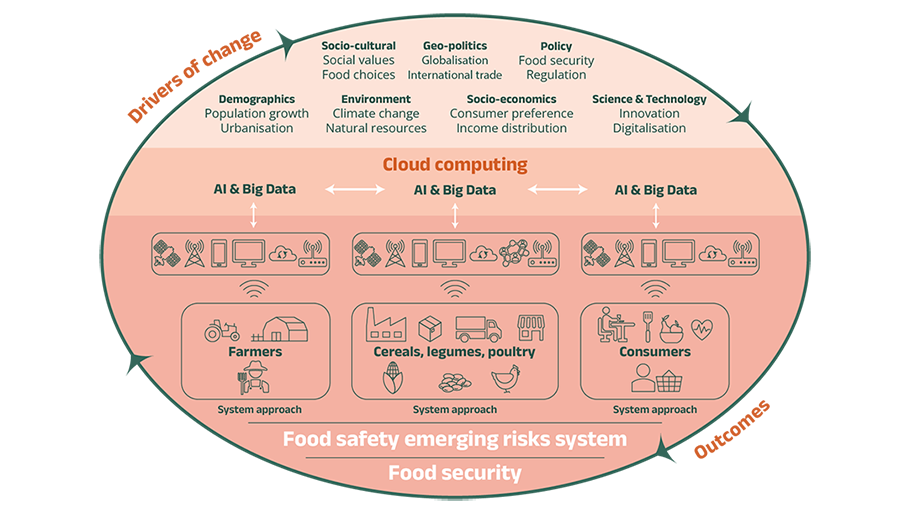
Image Credit: The European Food Information Council
This question has been answered by the new EU-funded project HOLiFOOD using AI and Big Data to come up with early warning systems that will safeguard consumers from food safety risks. It will convert the risk analysis framework from reactive to proactive to assist the transition to a viable and safe food system.
Food Systems Urgently Need a Holistic Approach
Across the globe, food systems have been threatened by unparalleled difficulties, and there is a pressing need to convert the food system to provide low-cost, abundant, and healthy food for everyone.
In the past few years, new tools like the risk–benefit assessment (RBA) have been developed to offer advice on dietary habits and fix new policies (EFSA, 2010) while guaranteeing food safety and safeguarding consumers against rising risks.
The HOLIFOOD project will combine risk-benefit assessment and affordable considerations into a single “holistic” framework for risk analysis. Having been integrated with AI and big data tools, this framework will assist early identification of rising food safety hazards present in the food system.
This will enable food safety authorities to make improved decisions by taking the entire surrounding (environmental, societal, and economic) within which food is being produced.
Cereals, Legumes, and Poultry– How Can We Guarantee Food Safety Across These Food Chains?
Three chosen supply chains—legumes (lentils), cereals (maize), and poultry (broiler meat)—will be utilized to study increasing risks with the help of AI and Big Data technologies.
The selection of these three food chains has been made using two criteria: maize and poultry, for their significance concerning production and consumption across Europe, whereas the lentils supply chain was chosen as a small food crop that is anticipated to grow as a result of its potential as a plant-based protein alternative.
With the help of advanced technologies, HOliFOOD collaborators will come up with new and enhanced techniques for detecting known and unknown chemical and biological threats (for example, viruses and bacteria) across the three chosen supply chains. Also, the project will strive to make generic tools and methods that are applicable to the complete food system.
Co-Designing New Methods to Meet Real Needs of End-Users
Adoption of the techniques and outcomes would not be feasible without understanding the separate requirements of end-users. This guarantees that the data concerning rising food safety risks have been efficiently exchanged with the public and that what is being done to avoid and reduce the risks has been understood.
That is the reason why HOLiFOOD will take a holistic point of view on its stakeholder community, wherein particular activities will be aimed at understanding separate information requirements and fulfilling adoption barriers.
Project collaborators, among them scientists, NGOs, policymakers, and companies, will hire stakeholders and citizens during all phases of the project development, testing, and implementation of the methods and models.
End-users will help in designing and testing the project’s techniques in spaces called “living labs,” which the European Commission (EC) explains as “user-centered, open innovation ecosystems.”
A new method that warrants consolidation of research and innovation processes in real-life communities and settings. In this context, the citizen has been placed at the center of innovation, thereby enabling individual stakeholders to be taken into account across the lifecycle of the project.